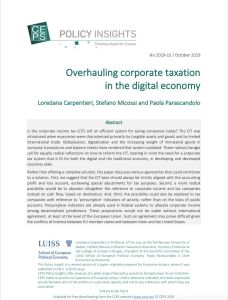
Read or listen offline
Amazon Kindle
auto-generated audio
1×
Log in to listen to the audio summary.
auto-generated audio
Recommendation
Introduced in the 1950s, the corporate income tax has since evolved, but a comprehensive update is long overdue. Because of globalization and technology, digital transactions and intellectual property now prevail over physical assets in most corporate financial statements. Tax specialists Loredana Carpentieri, Stefano Micossi and Paola Parascandolo examine the origins, efficacy and reform possibilities of the corporate income tax in this authoritative report for fiscal experts, economists and executives.
Summary
About the Authors
Loredana Carpentieri is a professor of tax law at the Parthenope University of Naples. Stefano Micossi is director general of Assonime, a corporate trade group, where Paola Parascandolo is the chief economist.















Comment on this summary